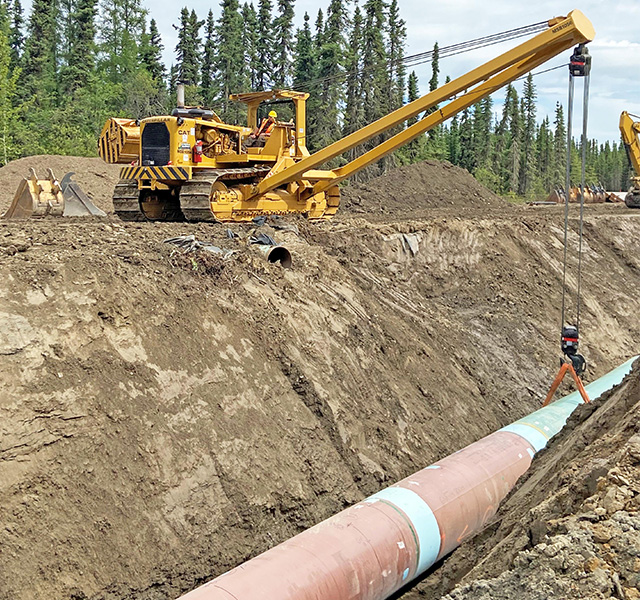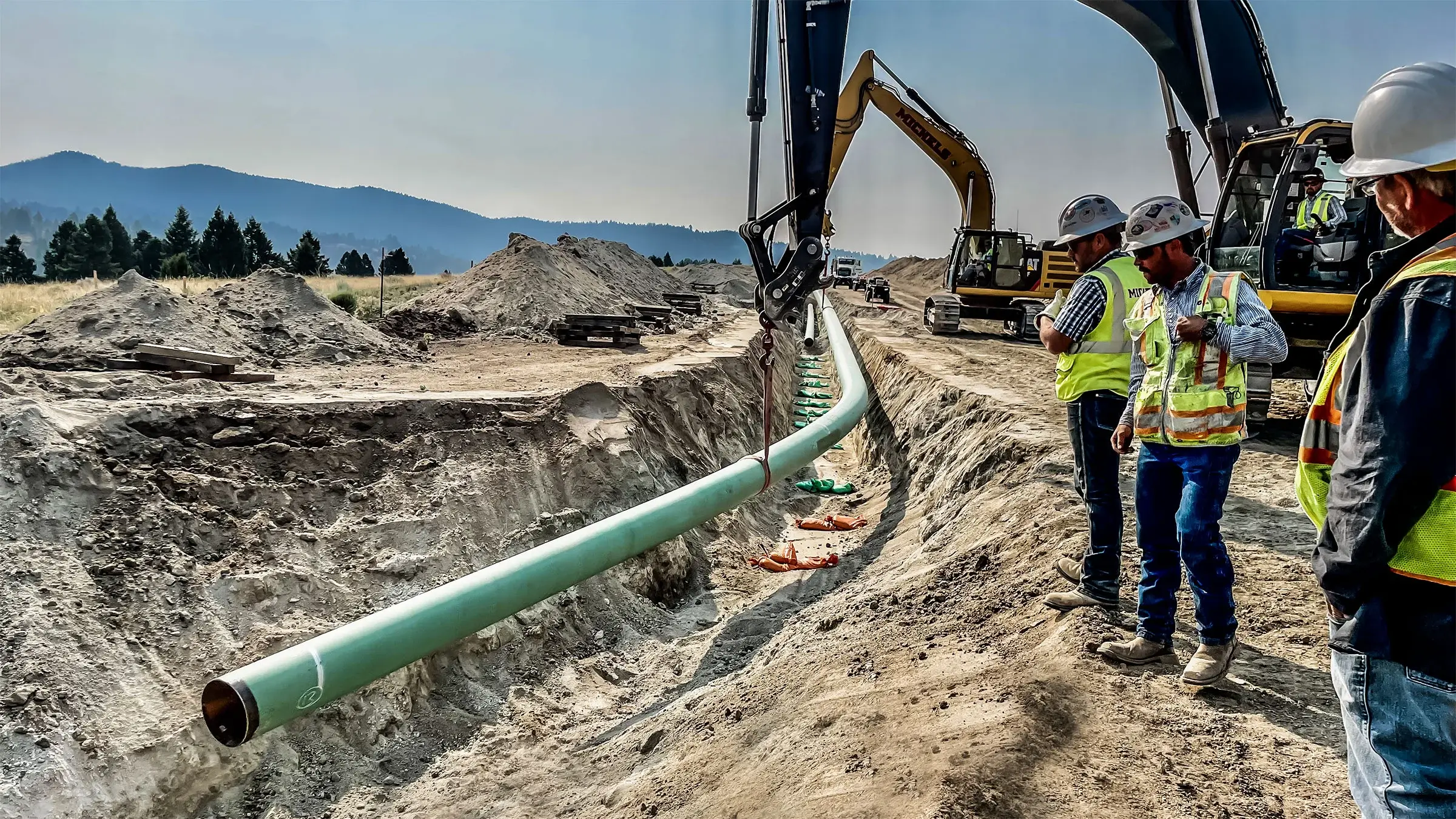Are You Compliant? Local Building Codes Through Creek Pipe Company
Wiki Article
A Deep Dive Into Pipes Installation: Essential Elements and Considerations for Successful Projects
Effective pipe installation is a crucial aspect of design tasks. It includes a series of elements, from material option to exact sizing and style. Each decision can especially affect the system's effectiveness and longevity. Recognizing these parts is necessary for preventing costly blunders. Creek Pipe Texas oilfield. As teams browse through the complexities of installation, numerous crucial considerations arise that warrant interest. What are the pivotal components that can make or break a piping task?Comprehending Pipe Materials and Their Applications
When choosing pipe materials, one have to think about the specific applications and ecological problems they will certainly face. Various products use distinctive homes that accommodate different demands. As an example, PVC is light-weight and resistant to deterioration, making it perfect for water circulation systems. On the other hand, steel pipelines provide stamina and durability, appropriate for high-pressure applications yet may need safety coatings to stop rust.Copper pipelines are favored for plumbing because of their antimicrobial residential or commercial properties and convenience of installation, while polyethylene is often utilized in below ground applications due to its versatility and resistance to cracking.The selection of product likewise depends upon temperature level extremes, chemical direct exposure, and installation location. For high-temperature applications, materials like CPVC or PEX can be helpful. Ultimately, comprehending the characteristics and restrictions of each material aids in making notified choices that enhance system effectiveness and long life.Importance of Appropriate Sizing and Layout
Proper sizing and style of pipelines are critical for making certain optimal circulation rates and reducing pressure loss. These elements likewise play a substantial role in figuring out the compatibility of products made use of in the installation. A systematic technique to sizing and design can substantially improve the effectiveness and long life of a piping system.Influence on Circulation Prices
Flow rates in piping systems are critically influenced by the sizing and style of the pipelines. Appropriately sized pipelines ensure that the fluid can move effectively, lessening disturbance and taking full advantage of circulation capability. Large pipelines can bring about reduced flow speeds, while undersized pipelines might limit circulation, leading to enhanced rubbing and prospective clogs. The style needs to additionally take into consideration variables such as pipe product, inner surface area level of smoothness, and format, as these add to the general efficiency of fluid transport. Additionally, the setup of installations and links within the system can affect flow prices. Subsequently, meticulous interest to pipe sizing and layout is necessary for optimizing flow performance in any kind of piping installation task.Pressure Loss Considerations

How can pressure loss greatly impact the performance of a piping system? Stress loss is a vital variable that can considerably decrease the performance of liquid transportation systems. When pipelines are improperly sized or developed, extreme stress loss might take place, leading to decreased flow rates and enhanced power intake. This inadequacy can result in higher operational costs and potential system failures. Proper sizing and style are vital to minimize pressure loss, guaranteeing that fluid dynamics stay excellent throughout the system. Designers have to meticulously consider elements such as pipe diameter, length, and material to achieve an efficient balance. Eventually, resolving stress loss during the design phase can improve dependability and durability, making it crucial for effective piping tasks.
Product Compatibility Variables
Stress loss is not the only variable that can influence the efficiency of a piping system; material compatibility likewise plays a considerable function in general effectiveness. Making sure that the products utilized in a piping system work with the fluids they will transport is important. Different materials can respond detrimentally to numerous chemicals, causing rust, deterioration, or contamination. This can ultimately compromise the honesty of the system and influence its long life. Furthermore, appropriate sizing and design are essential to accommodate thermal expansion and tightening, which can additionally influence material performance. Assessing variables such as temperature level, stress, and chemical make-up is critical in selecting appropriate materials, consequently improving system dependability and minimizing maintenance costs in the lengthy term.Strategies for Accurate Pipe Installation
Exact pipe installation is essential for guaranteeing system performance and durability. Several strategies can enhance the accuracy of this procedure. Initially, mindful dimension is important; installers need to utilize top quality tools such as laser degrees and tape actions to identify the specific sizes and angles called for. Next off, proper pipe cutting techniques, like using a pipeline cutter rather of a hacksaw, warranty clean edges that help with better connections. Additionally, using alignment devices, such as pipe jigs, can especially enhance accuracy during assembly. It is also advisable to consider thermal expansion; enabling sufficient spacing and expansion joints can prevent future imbalances. Finally, the installation group should adhere to manufacturer guidelines to comply with specific suggestions related to each pipe type. By carrying out these techniques, the likelihood of leakages and system failures decreases, inevitably adding to a more dependable piping system.Ensuring Pipe Placement and Support
Correct positioning and support are critical to the stability and performance of any type of piping system. Misalignment can bring about raised anxiety on joints, potential leakages, and reduced performance. To guarantee correct alignment, it is vital to use ideal tools such as laser degrees and alignment assesses. These instruments assist achieve exact positioning, assuring that pipes are mounted based on layout specifications.Support systems should be created to accommodate thermal growth and tightening, in addition to the weight of the pipelines and their contents. Choosing the appropriate sort of assistances, wall mounts, and brackets is important. Each need to be installed at defined periods to stop drooping or unnecessary stress and anxiety on the pipes. Normal evaluations adhering to installation can assist recognize any type of imbalances or indications of poor support. By focusing on positioning and support, one can substantially enhance the durability and capability of the piping system.Common Installation Blunders to Avoid

Testing and Inspection for Quality Control
The installation process may show up total, comprehensive screening and assessment are vital to ensuring the lasting integrity of a piping system. Numerous techniques are employed to analyze the stability of the installation, including stress tests, aesthetic evaluations, and non-destructive testing (NDT) methods. Pressure examinations confirm that the system can withstand functional problems without leaks, while aesthetic evaluations help recognize any type of visible issues in the pipes or joints. NDT methods, such as ultrasonic or radiographic screening, supply insights right into the material honesty without endangering the system.Additionally, documenting the screening results is vital for future reference and conformity with sector criteria. This documentation offers not just as a quality control action however additionally as a legal guard. Inevitably, a thorough screening and assessment procedure contributes to the total safety and effectiveness of the piping water line break near me system, ensuring it fulfills the needed efficiency standards gradually.Upkeep Tips for Lasting Pipe Equipments
Maintaining a pipeline system calls for regular evaluations and monitoring to determine possible issues before they rise. Implementing reliable cleansing strategies is also important for stopping build-up that can prevent performance. With each other, these techniques add to the longevity and dependability of the piping framework.Regular Evaluations and Tracking
Normal inspections and tracking are essential for guaranteeing the durability and effectiveness of pipe systems. Routine analyses can aid recognize potential problems such as leakages, corrosion, or obstructions before they intensify right into considerable issues. Executing a routine for routine inspections permits the very early discovery of deterioration, allowing timely fixings. Surveillance pressure levels and circulation prices can likewise supply important insights right into system efficiency, making sure that any type of anomalies are dealt with immediately. Furthermore, the use of sophisticated innovations, such as infrared video cameras or ultrasonic testing, can boost the assessment process by offering thorough details regarding pipe conditions. Inevitably, constant monitoring and examinations add to the integrity and longevity of pipe systems, decreasing the risk of expensive repair work and downtime.
Efficient Cleaning Strategies
Efficient cleaning strategies are vital for maintaining the honesty and performance of pipe systems. Routinely scheduled upkeep, such as flushing systems with water, helps get rid of debris and buildup. For more persistent obstructions, professionals commonly recommend hydro jetting, which makes use of high-pressure water to clean pipe insides thoroughly. Chemical cleansers can also be used yet ought to be picked thoroughly to stay clear of harmful pipelines. Furthermore, utilizing devices like pipe video cameras can assist in identifying issue locations and guaranteeing reliable cleaning. Preserving correct drainage and preventing the disposal of harmful compounds down pipelines further contribute to long life. Overall, constant cleansing techniques not only improve efficiency but also minimize the threat of costly repair services in the future.Regularly Asked Questions
What Are the Labor Costs Connected With Pipe Installation Projects?
Labor prices for pipe installation projects vary commonly, affected by aspects like task complexity, regional wage prices, and called for abilities (Creek Pipe HDPE installation). Typically, these costs can range from $50 to $100 per hour, depending on the workforce involvedExactly How Do Regional Laws Affect Pipe Installation Practices?
Neighborhood regulations significantly affect pipe installation techniques by establishing safety requirements, material specs, and installation approaches. Conformity with these guidelines warranties task safety and security, ecological protection, and adherence to local codes, ultimately impacting overall project success and expenses.What Equipment Are Essential for Pipe Installation?
Important tools for pipe installation include pipe wrenches, cutters, and fittings. In addition, sealers, determining tapes, and levels guarantee precision and durability. Proper equipment advertises performance and adherence to safety standards throughout the installation procedure.Just How Can Climate Conditions Impact the Installation Process?
Climate condition significantly affect the installation process, as extreme temperature levels, rainfall, or wind can influence material integrity, employee security, and job timelines. Proper planning and scheduling site are vital to minimize these prospective obstacles during installation.Exist Service Warranties for Installed Pipe Equipments?
Guarantees for mounted pipe systems typically vary by maker and installation professional. Commonly, they cover flaws and workmanship for a specific period, making sure the system's reliability and supplying peace of mind to the property owner.Report this wiki page